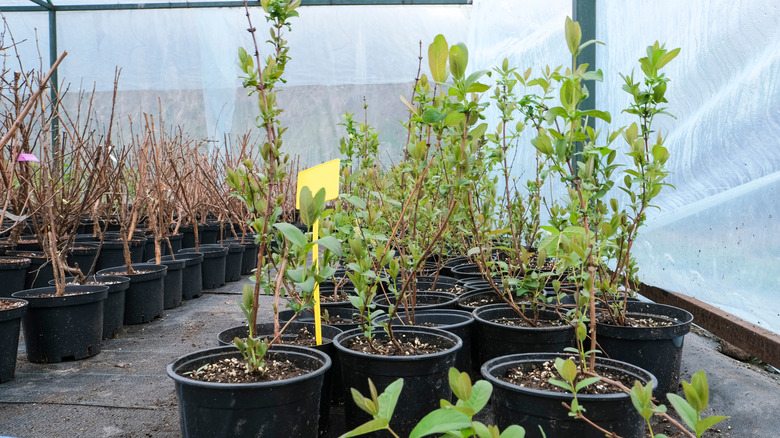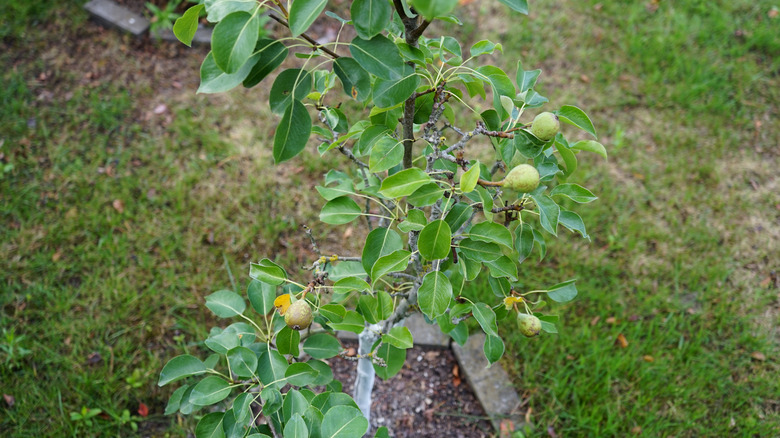Here's How Long It Will Take Store-Bought Fruit Trees To Produce
If you're planning to purchase one or more fruit trees from your local nursery or garden center to plant in your yard, you should be prepared to wait at least a couple of years for the trees to bear fruit. The exact time will depend on the type of tree you're buying as well as a range of other factors. The most common things that control fruit production are the age and variety of the tree, local weather conditions, how healthy the tree is, and the presence or absence of pollinators. As a general guide, it can take anywhere from two to six years before your store-bought fruit tree will start to produce a harvest.
It's common for fruit trees sold at retail outlets to be at least two years old. You might even see trees that already have blossoms or tiny fruits on them, but don't get too excited just yet. You see, the tree will need to become established in your yard before any real fruit production can begin. This primarily involves developing a good root system that's able to both support and sustain the tree so it can grow nice and healthy. But don't worry; that initial wait time will be well worth it because you'll end up with a thriving tree that provides you with a bumper harvest for years to come. However, if you don't have a lot of patience, you may want to consider some fast-growing fruit trees that you can plant in your yard.
Different types of fruit trees and the time it takes for them to fruit
This is just a basic guide on how long it will take different varieties of fruit trees to start bearing their harvest. Remember that certain other factors also come into play to ensure a good bounty. As a general rule, apple trees should start producing fruit from two to five years after being planted. Pear trees can take a little longer — up to six years — but some may begin fruit production in their fourth year of growth.
Certain stone fruit trees, like plums and cherries, should start fruiting from around three to seven years. Apricot trees are likely to produce fruit within two to five years, while peach and nectarine trees may begin fruiting within two to four years. As you're waiting for these trees to reach their full potential, you might like to add some citrus or fig trees to your yard which only take around one to two years to become productive. More uncommon varieties like pomegranates, olives, and mulberries will take around two to three years to fruit, while tropical varieties like pawpaw might take between five to seven years to be productive.
Other factors that can influence fruit production
The type of rootstock the tree is grafted onto also plays a role. For example, dwarf or columnar trees will usually start bearing much sooner. But, the downside here is that they're normally not as long-lived as normal-sized trees. However, they are a great alternative if you have limited space, or if you're in a rented home or apartment. You'll find that, more often not, many of these fruit trees will produce the first year after transplanting.
Above everything, it's important to give your new fruit tree the most ideal growing conditions that you can. A nice sunny spot in the garden, ample water during dry spells, correct fertilizer applications, and protection from pests and diseases will all help your tree to thrive and eventually come into production. You also want to consider whether the tree is self-pollinating or whether you need to plant another variety to enable cross-pollination. To that end, you want to ensure there are plenty of bees visiting your garden by planting flowers that will attract them. You might also want to familiarize yourself with mistakes everyone makes when growing fruit trees so that you can avoid them.


